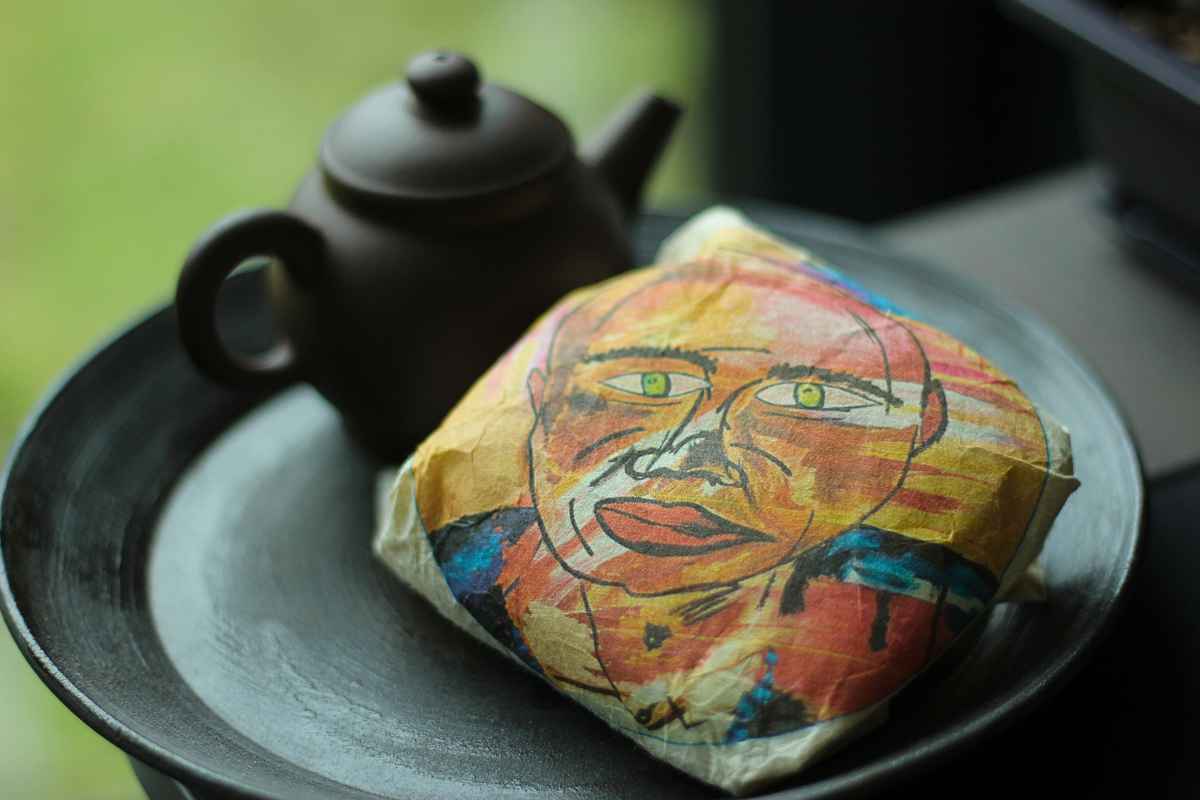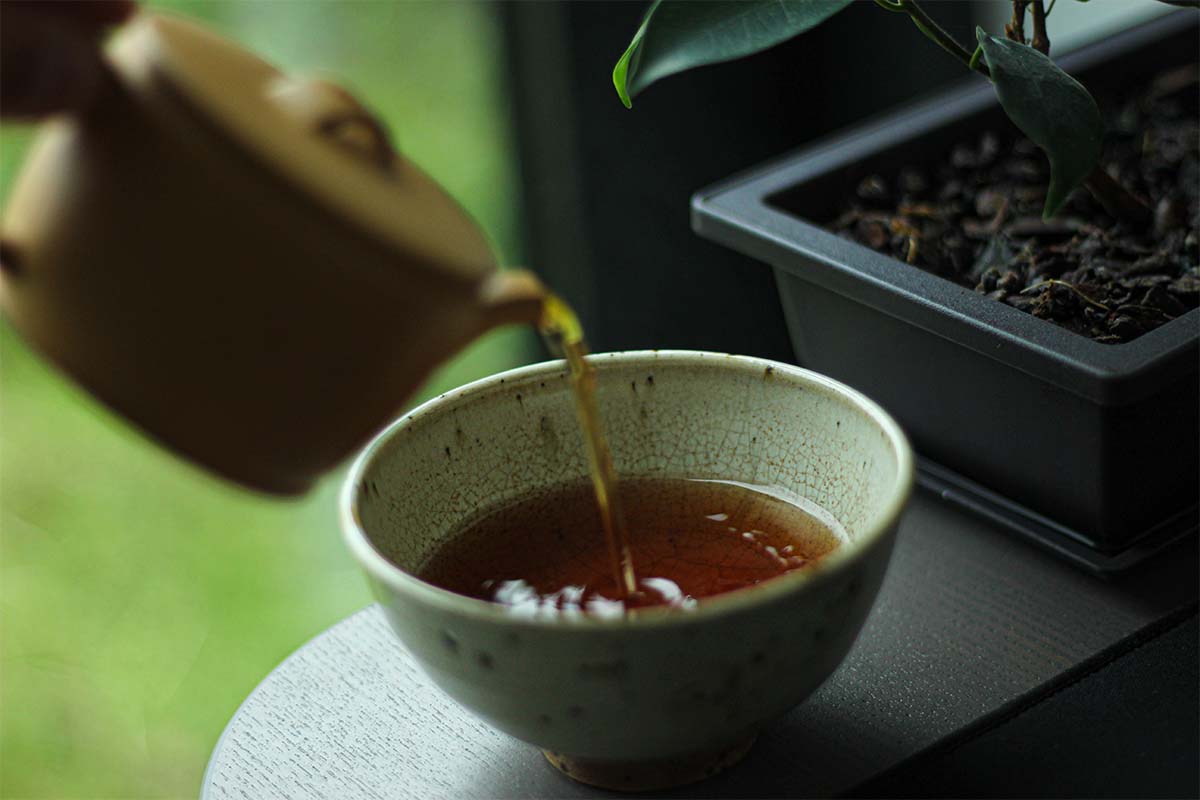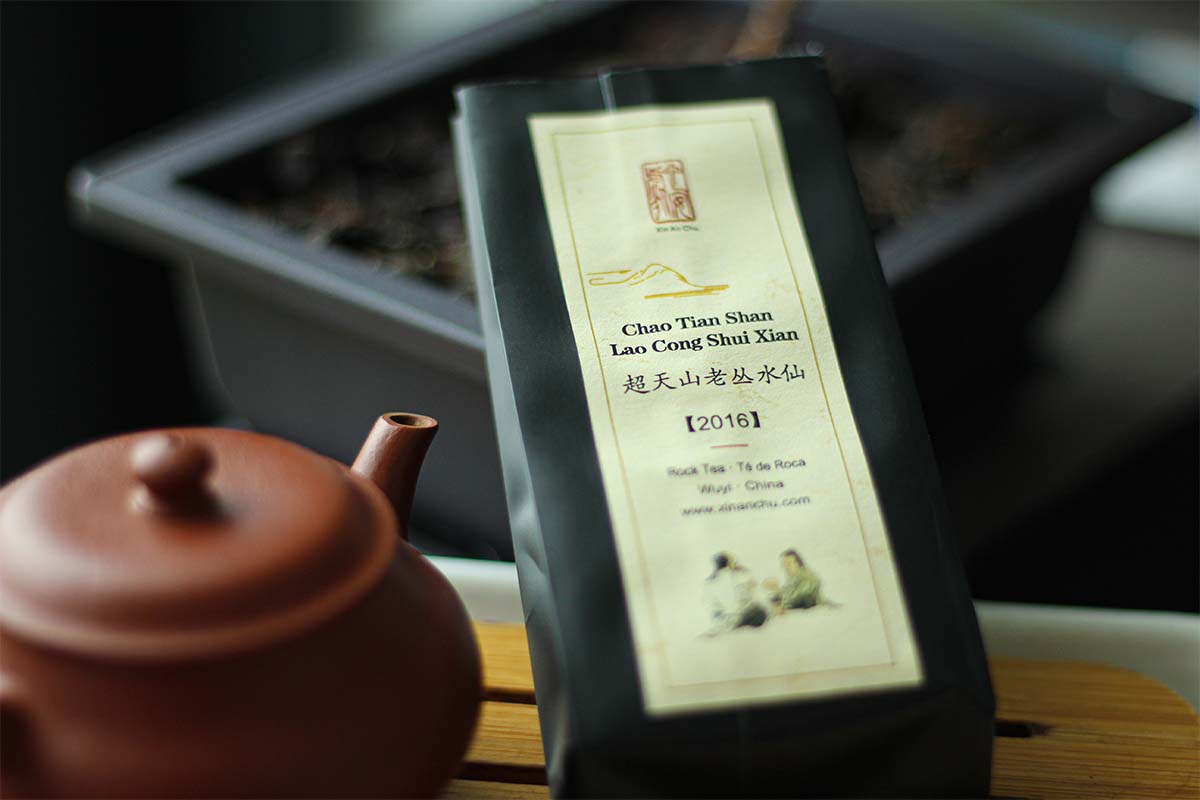I have read and heard a lot about the difference between brewing tea in porcelain or brewing tea in clay. Nothing beats experiencing something for yourself and that what I did. To do this little experiment, I brewed The Tea Guru’s 2005 Xiaguan ‘Jia Ji’ Raw Puerh Tuo that has been stored in Guangdong for 12 years. This will not be a post like my other posts as I will not give detailed notes of each infusion. I’m aiming to give some general notes of the differences I experienced during the session.
2005 Xiaguan ‘Jia Ji’ Raw Puerh Tuo
I won’t give too many details about this tea but it’s important to know what we’re brewing. It’s a Sheng (raw) Puerh tea from 2005 that has been aged in Guangdong for 12 years. Storing and ageing tea in Guangdong greatly alters the flavours of tea as it’s rather hot and humid over there. The tea itself is a 100g tuo that was inside a box, which you can see at the top of this post. Ageing has made this tea softer and not as aggressive as it was in the early years.
Have you considered subscribing to Tea Adventures? You can enter your email address in the sidebar and get updates whenever I publish a new article. You never have to miss an article again by joining our mailing list.
Tea session
In order to do this session, I used an 80ml porcelain gaiwan and a 150ml Jianshui teapot. I brewed 4g of tea in the gaiwan and 7.5g in the teapot. This way, the leaf to water ratio was the same. I preheated them both and used the same water (99°C) during the session. After preheating, I rinsed the leaves and started brewing. I also used the same infusion times to get the circumstances as similar as possible.
The tuo itself is compressed tightly so it wasn’t easy to chip off some tea. I managed to do it and started brewing!
I was surprised by the differences between the first two infusions (15 and 20 seconds). The tea from the gaiwan had subtle flavours of smokiness and some woodsy notes as well. There was also a light bitterness in the finish.
To me, it seemed that these flavours were a lot more at the surface of the tea and they were not really complex. The tea from the Jianshui pot had some light smokey and woodsy flavours and a subtle fruity smell. One big difference is that although the flavours were not that intense, they were deeper and a lot more complex. It’s weird to explain how such subtle flavours can be so deep and complex.
During the third infusion, the flavours I got from the gaiwan didn’t change much. Smokey and woodsy notes that were soft and easy to drink. The tea from the Jianshui pot had more complexity, while the tea from the gaiwan had flavours at the surface. The flavours were also sharper and edgier in the gaiwan.
After the third infusion, the tea from the gaiwan still had the smokey and woodsy notes with a light bitterness in the finish and aftertaste. Towards the end of the session, I also got a light sweetness. One thing that was remarkable was that the leaves lost their flavours a lot faster. I stopped brewing in the gaiwan after six infusions, while the Jianshui pot produced some fantastic brews after eight infusions.
The Jianshui pot really started to shine halfway through the session. I felt that the clay could hold and extract the flavours much better. That was already noticeable during the early infusions and was confirmed during the later ones. The flavours were smokey and woody but nothing too intense. Subtle but deep and complex flavours. A light sweetness also popped up during the later infusions, which was a nice bonus. I think I managed to do around 10 infusions before the flavours started to fade. That is almost double the infusions of the gaiwan. It might be a coincidence but even if it is, the results in the Jianshui clay were far better.
My previous tea session was with white2tea’s 26 Hour Roast Milan Maocha. This is a Dan Cong oolong with notes of warm honey in combination with a floral and fruity sweetness. You can read my notes over here.
Conclusion
In my attempt to learn more about the difference between brewing tea in porcelain and clay, I discovered a lot! I expected some differences but I was surprised by the nature of them. I thought the clay would soften the sharp edges and make it not as aggressive as porcelain, but it did much more than that. It feels like the clay was destined to extract everything (and more) from the leaves at its own pace as it added so much complexity to the flavours. Each successive infusion, the tea offered some more of its flavours without overdoing it. I’m really happy I did something like this myself because experiencing something greatly improves the impact.
One important question to ask is if it’s worth it to spend €100+ on a clay teapot. If you have one or two gongfu sessions a week, I would say it’s not worth it. If you are serious about tea and drink it almost every day, it might be worth looking into because it adds another dimension to those precious tea leaves. However, it all depends on the amount of money you want to spend. If you decide to brew gongfu instead of Western-style (with a mug and tea filter), it’s already a big improvement. If you’re looking for those final details, buying a clay teapot might be it.
Do you want to try this experiment yourself? Or do you just want to buy this tea? You can buy it at The Tea Guru’s store.




